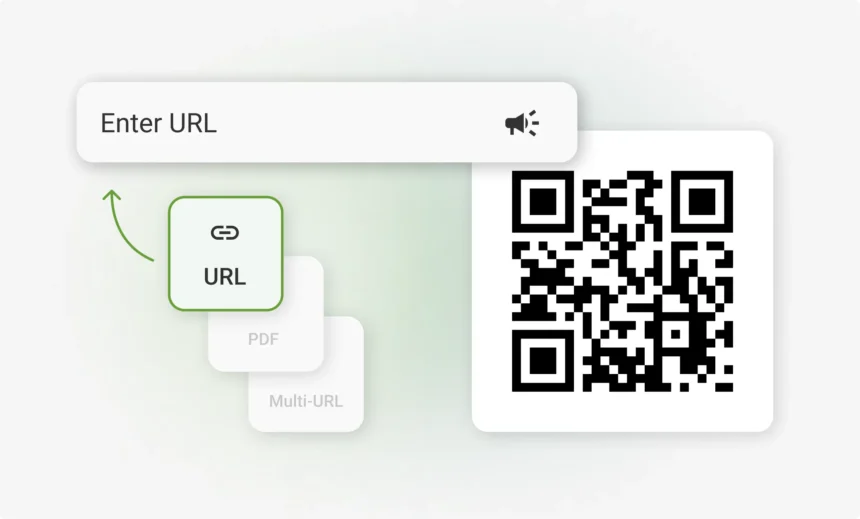In today’s digital-first world, the demand for trust and transparency has never been higher. From financial transactions to product authenticity, people want verifiable proof that what they see is what they get. That’s where QR codes and blockchain come together—a partnership that’s shaping the future of transparency in industries like supply chain management, healthcare, and digital payments. And the best part? Anyone can start experimenting with these tools using a simple qr code creator free online.
Why Transparency Matters in the Digital Age
Think about the last time you bought a product claiming to be organic, fair-trade, or locally sourced. How can you really be sure those claims are true? This is where transparency plays a critical role. Businesses that provide verifiable data about their processes gain consumer trust, which directly translates into loyalty and long-term success.
Traditional systems rely heavily on centralized databases, which are vulnerable to manipulation or restricted access. By combining the accessibility of QR codes with the immutability of blockchain, companies can close the trust gap and give customers complete visibility into the information that matters.
How QR Codes and Blockchain Work Together
At first glance, QR codes might seem like nothing more than quick links to websites or apps. But when linked to blockchain records, they become powerful tools for delivering real-time, verifiable information. Here’s how it works:
- Data Storage on Blockchain – Critical data (like product origins, transaction details, or medical records) is securely stored on the blockchain, where it can’t be altered or deleted.
- QR Code as the Access Point – A QR code is generated and printed on packaging, documents, or receipts. When scanned, it provides direct access to the blockchain data.
- Instant Verification – Customers, regulators, or stakeholders can scan the QR code and immediately confirm the authenticity of the information.
This combination removes middlemen and makes fraud far more difficult, giving both consumers and companies peace of mind.
Real-World Applications
The partnership between QR codes and blockchain is already transforming multiple industries. Let’s explore a few powerful use cases:
1. Supply Chain Transparency
From coffee beans to diamonds, consumers are increasingly interested in knowing where their products come from. Blockchain records the journey of an item—from raw material to finished product—while QR codes give buyers instant access to this data. For instance, a customer could scan a QR code on a chocolate bar and see every stage of the cocoa’s journey, including the farms, factories, and distribution centers involved.
2. Anti-Counterfeit Measures
The global counterfeit market costs businesses billions of dollars each year. Luxury goods, electronics, and pharmaceuticals are particularly vulnerable. A blockchain-backed QR code can verify whether a product is genuine, helping consumers avoid fakes and ensuring brand protection.
3. Digital Payments and Smart Contracts
Blockchain has already made headlines for powering cryptocurrencies, but when combined with QR codes, it creates an even smoother payment experience. Imagine scanning a QR code to pay with crypto, with every transaction automatically logged on the blockchain. This ensures both parties can trust that the payment is secure, irreversible, and transparent. You can even check the current exchange rate such as Bitcoin to NOK (Bitcoin til NOK) or any other crypto-fiat rate to stay informed and make confident transactions.
4. Healthcare Records
Accessing accurate healthcare information can literally save lives. By embedding patient data on blockchain and linking it with QR codes, doctors and emergency responders can securely access critical records in seconds, without worrying about tampering or unauthorized access.
Benefits for Businesses and Consumers
The synergy between QR codes and blockchain offers tangible benefits for both sides:
- For Consumers: Instant access to trustworthy, verifiable information without relying on third parties.
- For Businesses: Enhanced credibility, reduced fraud risk, and stronger customer loyalty.
- For Regulators: Easier monitoring and enforcement of compliance standards.
The result is a system where everyone wins—businesses gain trust, consumers gain confidence, and regulators gain clarity.
Getting Started with QR and Blockchain
The beauty of this technology is its accessibility. Businesses don’t need massive budgets to start. You can begin by experimenting with QR codes using a free online generator, then gradually integrate blockchain-backed data for specific processes. Start small—for example, with limited product lines—and expand once you see how customers respond.
A few practical steps to begin:
- Define the Data: Decide what information will provide the most value to your customers (e.g., sourcing details, authenticity certificates, or transaction logs).
- Choose a Blockchain Platform: Ethereum, Hyperledger, and VeChain are popular options for supply chain and transparency-focused projects.
- Generate QR Codes: Use online tools to create scannable codes and place them on your products or documents.
- Educate Your Customers: Transparency is only useful if people know how to access it. Show them how to scan QR codes and understand the blockchain-verified data.
Looking Ahead: The Future of Trust
As consumers continue to demand greater accountability, the integration of QR codes and blockchain is poised to become the new standard for transparency. From curbing counterfeit goods to creating trust in digital transactions, this partnership has the potential to reshape how we interact with businesses and institutions.
In short, QR codes make transparency accessible, and blockchain makes it unshakable. Together, they’re paving the way for a future where trust is no longer optional—it’s built right into the system.







